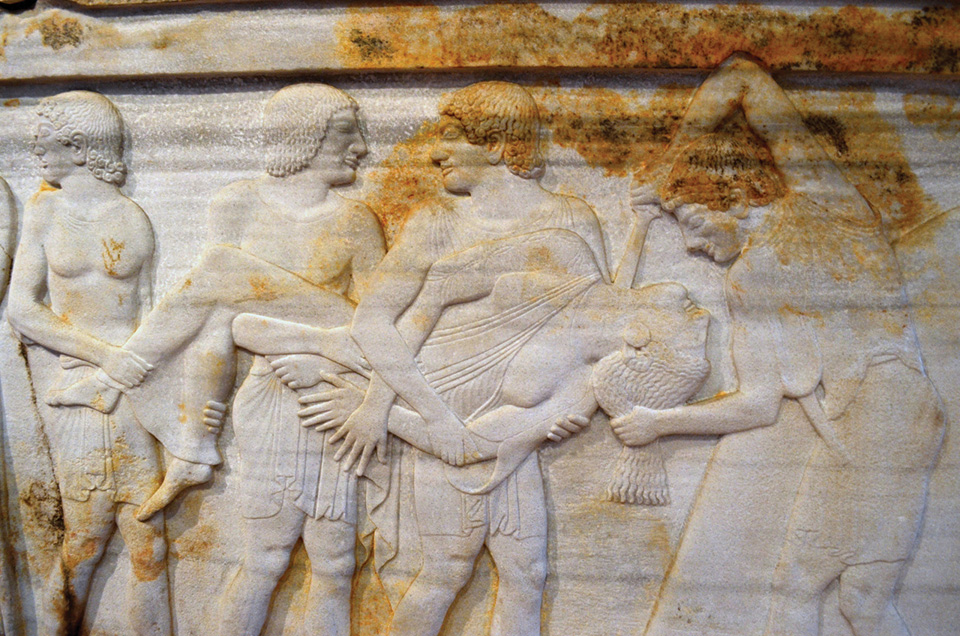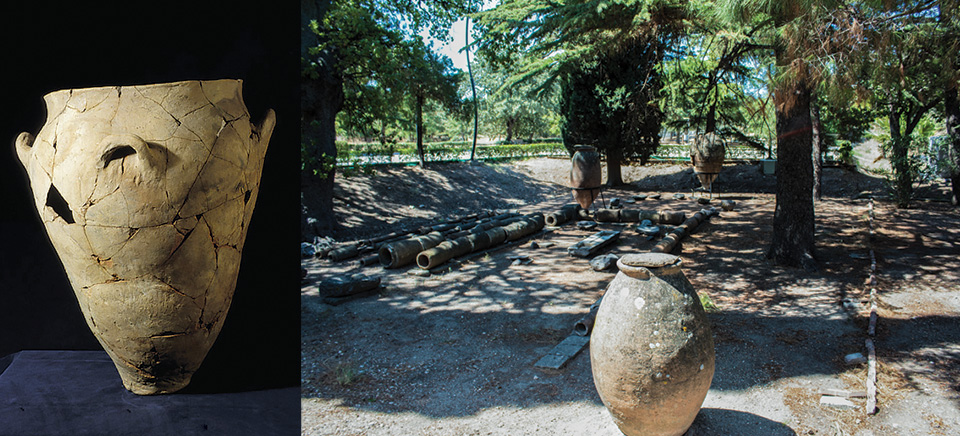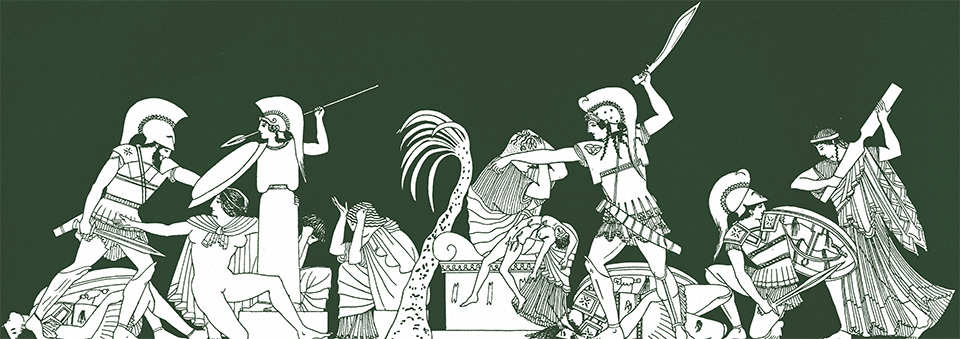
Troy VII is often subdivided into two different phases, Troy VIIa and Troy VIIb, as a major destruction event occurred between 1220 B.C.-1180 B.C. that demarcates two very different phases. After the city of Troy VI was destroyed by an earthquake around 1300 B.C., a much different settlement developed at the site. Although Troy VII seems to have been rebuilt by the survivors of Troy VI, the new city lost much of its monumental character. A large portion of the population appears to have moved within the walls of the citadel creating a somewhat cramped environment.

The large freestanding structures of the previous period are re-used, but now they are partitioned and subdivided into much smaller spaces. This was likely necessary to accommodate the increased population within Troy’s walls. Large storage jars called pithoi were installed in many of the new houses. This indicates that the occupants of Troy VII were perhaps stockpiling supplies and may have been worried about their food supply. The fortification walls were quickly rebuilt and strengthened. Some of the gates that were open in Troy VI were sealed, while other gates were enhanced. This suggests that Troy’s inhabitants were consciously restricting access to city and were clearly concerned for their safety.

Is Troy VII Homer’s Troy? Some scholars believe that Troy VII and not Troy VI should perhaps be seen as the city made famous by Homer’s poems. That is because between 1220 B.C.-1180 B.C., the city was violently destroyed by war. There is evidence of widespread burning and in some places up to three feet of blackened debris covers the site. Archaeologists have found arrowheads and other military paraphernalia within Troy VIIa’s destruction layer. And perhaps most telling, there are even unburied human remains strewn around the site. All signs point Troy VIIa’s violent end by the hands of an attacking group of outsiders.
It should be noted though, that archaeologically and historically, there are some problems of associating this event with the Mycenaean Greeks of the Trojan War epics. Many experts have pointed out that at the turn of the 12th century B.C., the great Mycenaean settlements on the Greek mainland had themselves already diminished and disappeared, and more than likely would have been incapable of launching an assault on Troy at this particular time.